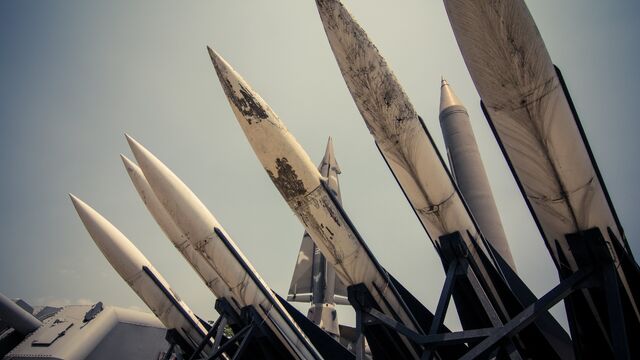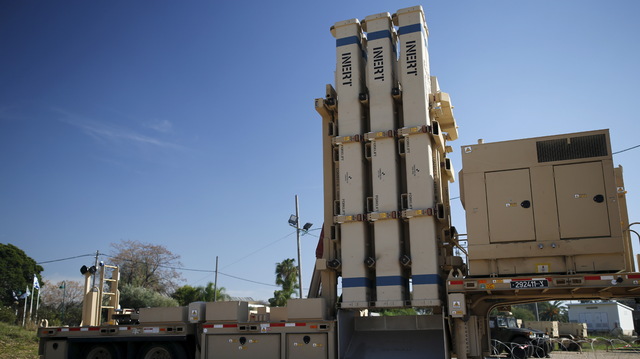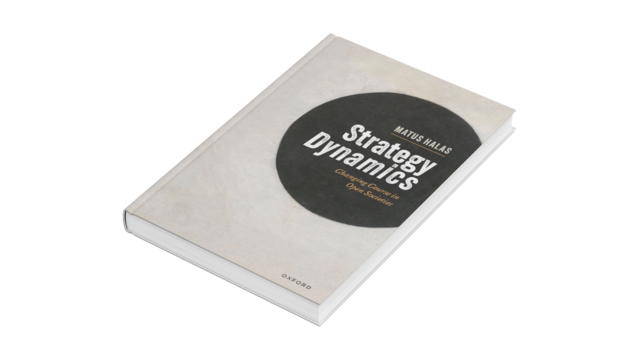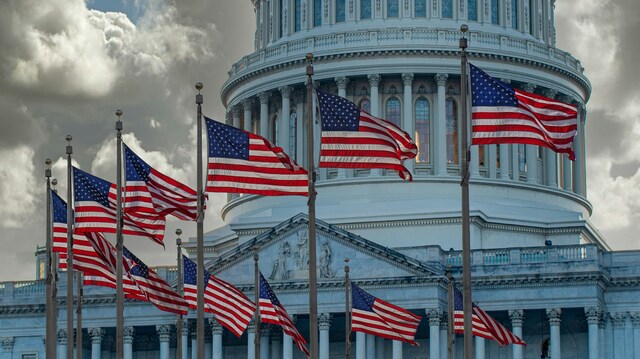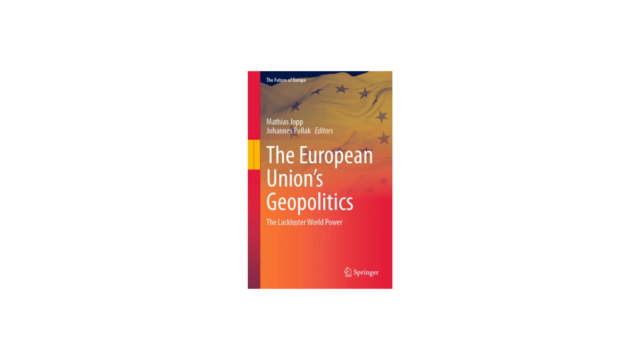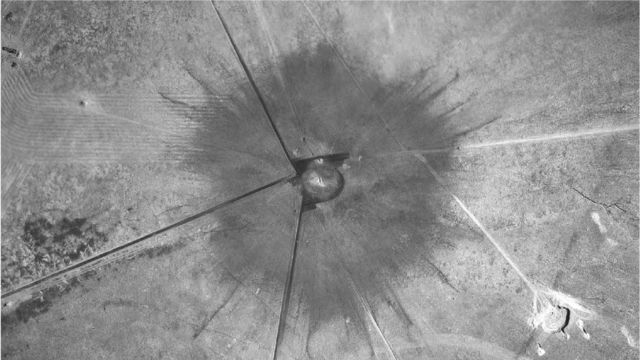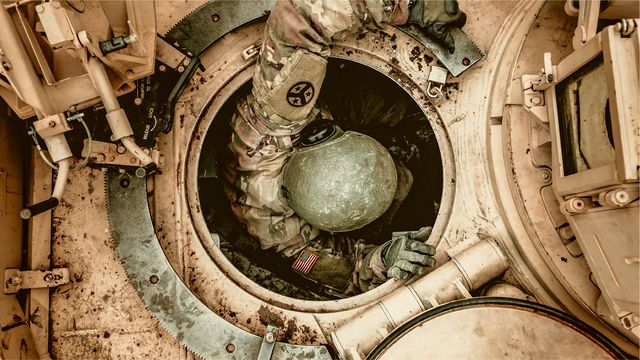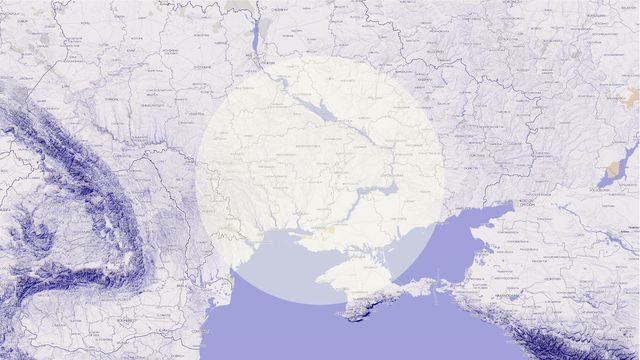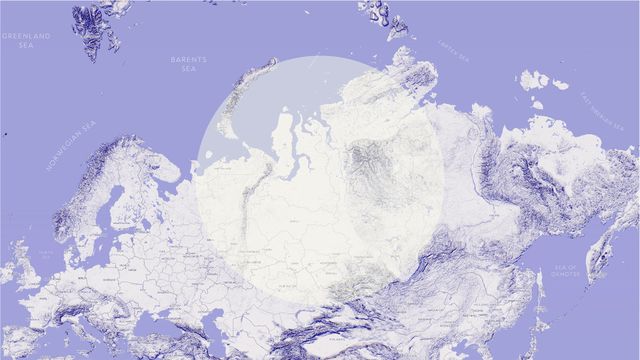NUCLEAR DETERRENCE OF RUSSIA AND THE US IN THE CONTEXT OF THE WAR IN UKRAINE
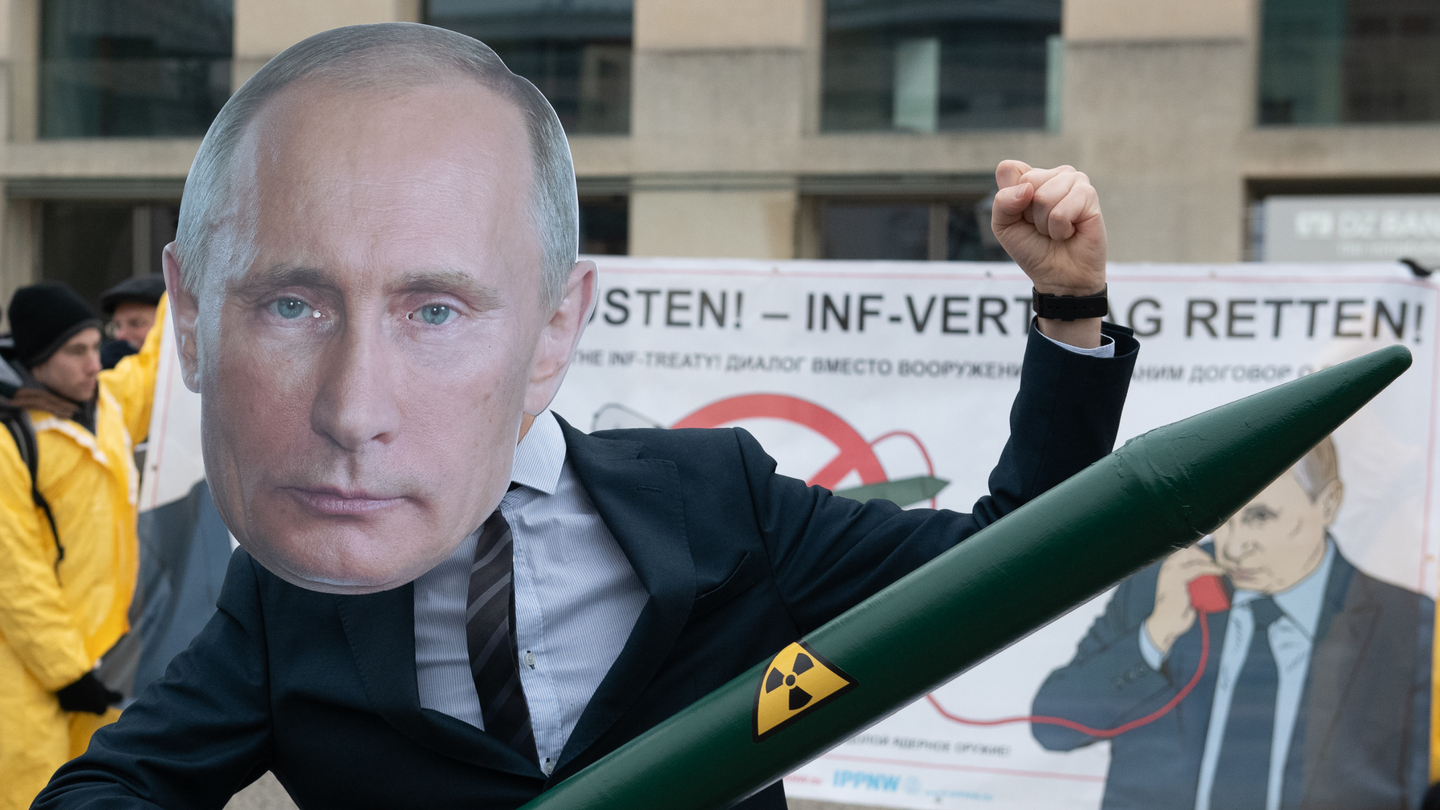
With the war in Ukraine, there has been a significant deterioration of the security situation especially in Europe, which was associated with the threat of the use of nuclear weapons and the resumption of the nuclear arms race. This reflection first characterizes the concepts of nuclear deterrence of the USA and the Russian Federation in terms of the main doctrinal documents of both countries and draws attention to, among other things, some of their identical features. It particularly expresses concerns about the Russian nucleardeterrence doctrine and the conditions of the use of nuclear weapons in connection with the Russian aggression against Ukraine. It also points to the need for the resumption of the US-Russian security dialogue and the circumstances preventing its implementation.
The Conception of Nuclear Deterrence
The concept of nuclear deterrence is closely linked to the ownership of nuclear weapons by nine countries (the US, RF, the PRC, France, the UK, India, Pakistan, Israel and the DPRK). It is based on the threat of a devastating retaliatory use of nuclear weapons, which should deter the aggressive behavior of a potential attacker. The effectiveness of the threat is contingent on the threatening actorʼs ability to realistically implement the deterrent threat, its credibility and the comprehensible communication of the message of retaliation to other states. The concept of nuclear deterrence, which sets the conditions for the use of nuclear weapons, is part of the basic security documents of nuclear countries, especially their
nuclear strategies.
Of the 12,705 nuclear warheads that existed in the world as of January 2022, according to the prestigious Stockholm International Peace Research Institute (SIPRI), the Russian Federation and the US owned about 90% of them. 3,732 of these nuclear warheads were in operational deployment (USA – 1744 warheads, RF – 1588, UK – 120, France – 280). The estimated number of nuclear warheads owned by China is 350. Around 2,000 nuclear weapons, again the majority of which are in the armaments of the US and Russia, are in
a state of high combat readiness and are ready to be launched in a matter of minutes, according to SIPRI.
The existing nuclear threat is heightened by the risk of launching nuclear strikes due to a miscalculation of the adversaryʼs behavior, human failure, or a technical malfunction. Another ongoing challenge is posed by terroristsʼ efforts to acquire nuclear weapons and the increasingly topical possibility of a cyberattack on the weaponsʼ command and control positions.
US Nuclear Deterrence
According to the available information, the Biden administration submitted a classified version of the National Defense Strategy (NDS) with annexes to the relevant Congressional committees for consideration in late March. They comprise the Nuclear Strategy (the Nuclear Posture Review, NPR) and the Missile Defense Strategy (the Missile Defense Review, MDR). President Biden also presented the main elements of the NPR to the participants at the NATO summit in Brussels in March. The unveiling of an unclassified abridged version of
the NPR, which was originally planned for April, has not yet taken place.
Citing the first unofficial communication from US officials, Biden claimed during the presidential campaign that the US nuclear deterrent will be exclusively focused on nuclear threats. It will thus be intended to deter hostile conventional, biological, and chemical threats, and presumably cyber attacks in addition to basic deterrence against nuclear attack. As D. Kimball of the non-governmental Arms Control Association (ACA) said, the Biden administration, like previous US presidents and also Russia, also seems to continue to envisage a nuclear deterrent option of launching land-based strategic nuclear weapons. In this case, an enemy of the US signals threat of launching strategic missiles against it, though these missiles. have not yet reached US targets. In English, this concept is referred to as “launch under attack” or “launch-on-warning.” The former US Secretary of Defense in the Clinton administration William J. Perry and the arms control expert Tom Z. Collina pointed out the main risk of this concept in their 2020 book “The Button.” It is that in the event of a false alarm that would lead to strategic missiles being launched, after their launch, the strategic missiles can no longer be diverted from their paths toward their targets. In the US, the use of nuclear weapons is decided upon solely by the President, and the decision must be taken within minutes in an emergency situation. In Russia, the famous black nuclear briefcase is to be made available to three individuals – the President, the Secretary of Defense, and the Chief of Staff. Given the secrecy of Russia’s decision-making system for the use of nuclear weapons, it can only be estimated that the corresponding decision on whether to launch nuclear weapons should most likely be unanimous.
Following the previous Trump NPR, the Biden administration will also implement in its NPR a commitment to modernize all three components of the so-called strategic nuclear triad (land, air, and naval carriers), which is the backbone of the US nuclear deterrent. The ACA analyst Shannon Bugos, in a June 2022 article dedicated to Bidenʼs military budget for 2023, specified that the new measures would include, among other things, the replacement of the existing 400 Minuteman III land-based intercontinental ballistic missiles with new Sentinel missiles, and the creation of a new squadron of strategic B-21 Raider bombers (approximately 100 of them), and a fleet of 12 new Columbia-class nuclear submarines. By contrast, the Biden administration did not approve the Trump administration's plan to develop a cruise missile for submarines and highly-explosive nuclear gravity bomb.
THE RUSSIAN NUCLEAR-DETERRENCE DOCTRINE AND THE POSSIBLE USE OF NUCLEAR WEAPONS IN UKRAINE
Regarding the Russian invasion of Ukraine, two points in particular are highlighted in relation to the possibility of the Russian Federation using nuclear weapons. First, the threat of the use of nuclear weapons, voiced by President Vladimir Putin to ensure that there would be no external interference in the “special military operation”, as Putin called the Russian invasion at its launch on 24. February is often cited. The second warning signal was President Putinʼs ambiguous announcement of putting nuclear forces under a “special regime of combat readiness”, which the Russian Defence Minister Sergei Shoigu later linked to the reinforcement of personnel at command and control posts. Also at that time, the national technical means and other verification sources of the main NATO member states did not record any extraordinary activities at the locations where Russian nuclear weapons are operationally deployed and stored. The restrained attitude of the US and NATO contributed to calming the high tensions that resulted from these provocative statements by the Russian President. The alleged Russian concept of “escalation to de-escalation”, consisting of the deployment of low-yield nuclear weapons in the early stages of a regional conventional conflict, is also sometimes speculatively recalled in connection with this issue.
As mentioned above, the decisive reasons for the possible use of nuclear weapons by Russia and the US are set out in their main security documents. In this context, security analyst Michal Smetana, in an article entitled “Talks about Armageddon: How many steps remain to the nuclear variant of the war in Ukraine”, which was published in the magazine Voxpot of 26 July 2022, pointed out, among other things, the purposefully political character of these declaratory documents. Their deliberate ambiguous wording particularly in their provisions regarding nuclear deterrence and conditions of the use of nuclear weapons, is primarily intended to make potential adversaries less certain in terms how they should act.
In the case of the RF, its main security document is the Military Doctrine of 2014, the wording of which was clarified in this regard by the Presidential Decree of June 2020 entitled “Basics of the State Policy of the Russian Federation in the Field of Nuclear Deterrence”. The document characterizes the Russian deterrence as defensive, as Russian nuclear weapons are to be used only in the event of an attack on Russia or its allies. The four main reasons for the use of nuclear weapons are credible warnings about at launch of ballistic missiles against the territory of Russia or its allies, i.e. before their impacts, as nuclear strike against Russia that already occurred, attack with conventional weapons on Russian nuclear forces and their command and control systems, and a possible conventional attack against Russia which ‘threatens the very existence of the state’. According to the assessment of some weapons-control experts (Nikolai Sokov, Sarah Bidgood, Olga Oliker, Dmitri Trenin etc.), the publication of the document was motivated by the desire to refute the assertion of the existence of the aforementioned Russian concept of ‘escalation to de-escalation’.
In the context of fighting in Ukraine, the fourth condition for the possible use of nuclear weapons particularly leads to questions due to the various possible interpretations of the words ‘threat to the very existence of the state’ in the context of a conventional war.
First, there is the risk of direct alliance involvement in the Ukrainian conflict. It could occur as a result of an unintentional and limited conventional incident between the Russian and the alliance forces, considering the geographical proximity of their deployment and their strained security relations. Failure to resolve the incident through negotiation would risk spreading it, depending on the escalation dynamics. This could have unimaginable consequences, including a possible exchange of nuclear strikes. The result in the final phase could be millions of casualties, a broken world economy and the destruction of the environment. Neither side of the conflict has any interest in such a development. This is evidenced by the statements of leading Western and Russian officials rejecting the prospect of a mutual armed conflict. Measures that correspond to these statements include the allianceʼs refusal to create a no-fly zone in Ukraine, and the establishment of a so-called deconfliction line, among others.
Another discussed possible reason for a limited use of Russian nuclear weapons in Ukraine, or the possible execution of a demonstrative nuclear explosion over the North Sea (which is allegedly being considered), could be possible fundamental reversal of the military conflict in favor of the Ukrainian army. According to Michal Smetana, in the event of the Ukrainian liberation of the Russian-occupied territories in the Donbas and Kherson regions, including the annexed Crimea, President Putin could regard the Russia forcesʼ defeat in Ukraine as a threat to his rule, as it could even include the risk of him being removed from power. But it
is not yet clear how far the link between the perception of a major defeat of Russian forces in Ukraine and the perceived threat to Putinʼs regime could be interpreted by the Russian leadership as a “threat to the very existence of the state” and thus as a reason for the use of nuclear weapons.
THE SLIM PROSPECTS FOR A RENEWAL OF THE AMERICAN-RUSSIAN STRATEGIC DIALOGUE IN THE FUTURE
In the current situation of Russiaʼs strained relations with the West and especially with the US, and the continuing Russian aggression in Ukraine, there is little real hope for a resumption of the US-Russian arms control negotiations and strategic dialogue in the near future. However, there are some signs suggesting that both sides have a mutual interest in maintaining some form of contact. Despite the ongoing fighting in Ukraine, the U.S.-Russian military relations were not definitively severed. This is evidenced by, among other things, by the ongoing exchange of classified data within the framework of the implementation of the bilateral treaty limiting the numbers of strategic nuclear weapons called the New START. Upon the initiative of the US, there were also telephone conversations between the Russian Defense Ministers, the US Secretary of Defense and the Joint Chiefs of Staff on 13 and 19 May 2022. They were the first of their kind since the establishment of the so-called deconfliction line at the operational level between the Ministry of Defence of the RF and the U.S. European Command (EUCOM) in March of the same year.
In President Bidenʼs greeting letter to the ACAʼs annual conference, which was held on the 2nd of June, there are words about the necessity to “continue Russiaʼs involvement in strategic stability issues.” In an interview with the U.S. monthly Arms Control Today in June, Adam Scheinman, the U.S. Presidentʼs Special Representative for Nuclear Non-proliferation, confirmed, among other things, the steadiness of the U.S. interest in continuing in the negotiations with Russia on arms-control issues. Specifically, according to Scheinman, the U.S. is interested in pushing for an agreement that would maintain control over both
countriesʼ strategic systems. It should also cover newly developed Russian weapons systems and non-strategic issues related to threat perception and strategic stability, including nonnuclear systems with strategic impacts, involving some types of conventional weapons, missile defense etc. Given the current situation, it is not possible to determine when such a resumption of such a dialogue might take place, according to Scheinman, but it will reportedly take place when it is “best suited to the interests of the U.S.” In June, Russian President Putin also expressed his support for the resumption of the US-Russian security negotiations. In July, the British Security Adviser Stephen Lovegrove also urged a rapid start of negotiations with Russia, but also with China, to prevent a high risk of strategic conflict breaking out.
CONCLUSIONS AND FURTHER ESTIMATED DEVELOPMENT
Russia’s aggression against Ukraine has significantly increased international tensions and threatens security in the European region. It also carries the risk of a direct conflict between Russian and NATO armed forces, which both sides are trying to avert. They are also trying to prevent any uncontrollable escalation of the current conflict. The reason for this is the fear that a direct conflict between them could escalate into World War III, which would most likely evolve from a conventional conflict into a nuclear war.
After comparing the concepts of nuclear deterrence of Russia and the US, we can conclude that, particularly the circumstances in which the two nuclear superpowers would use nuclear weapons are not very different. They both continue to refuse to accept a commitment not to use nuclear weapons first. Thus, the fact that both countries continue to operate according to the controversial „launch under attack“ concept, under which they keep a part of their nuclear forces at a high level of combat readiness, remains a high security risk. They also envisage the use of nuclear weapons against non-nuclear threats.
So far, there is no indication that Russia is currently preparing to break the “nuclear taboo” that has existed since the dropping of the US atomic bombs on Hiroshima and Nagasaki in August 1945, or to use nuclear weapons in Ukraine. However, this option cannot be completely ruled out, as it depends on the further development of the Ukrainian crisis.
The main limiting factor for the resumption of the US-Russian strategic dialogue has so far been the ongoing fighting in Ukraine. The vagueness of Russiaʼs intentions towards Ukraine also plays an important role, despite the declared general objective of “achieving denazification and a demilitarization” of the country. What is also unclear is the further focus of Russiaʼs expansionary policy and its long-term impact on its relations with the US, NATO and the EU and on the future organization of the security order in Europe.
One of the main possible motives for resuming the US-Russian dialogue, though this depends on the development of the war in Ukraine, could be the interest of both countries in maintaining transparency and predictability in the area of deployed strategic nuclear systems. This issue is becoming increasingly topical in view of the expiry of the New START agreement in 2026. Against the backdrop of the global existential threat of climate change and other unfavourable developments in the world, even in the face of extremely unfavourable circumstances, it is possible to look for common US-Russian interests after all. These could include, for example, the search for a new regulation for the deployment of medium- and shorter-range nuclear weapons in Europe (instead of the defunct INF), the problem of non-strategic nuclear weapons and other security issues.
